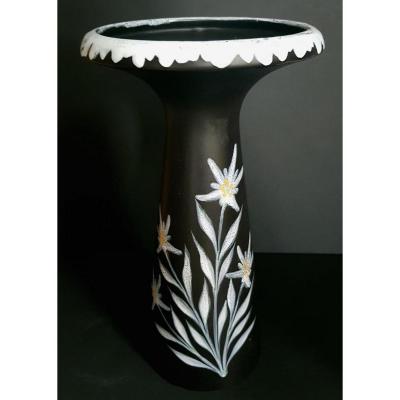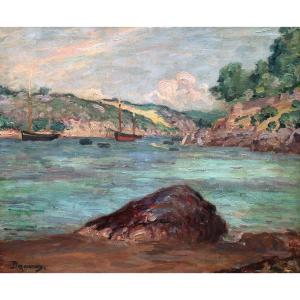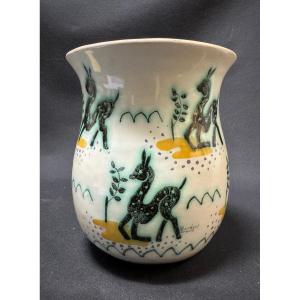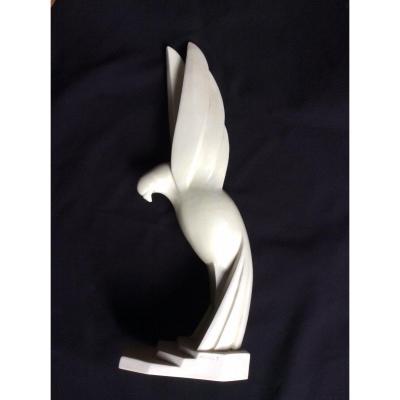This piece comes from a personal exhibition of Mathurin Méheut "Mer et Forêt" held at the Galerie Charpentier in Paris in December 1928. This exhibition mixes paintings and sculptures. Among these works is "La Femme aux roussettes". This sculpture is distinguished by the purity of its lines, testimony to a work completed with heart. This earthenware reveals the very essence of his art, where each line and each curve translate an intimate fascination for the ocean and its actors. "The Woman with the Bats" is the timeless symbol of the deep bond that unites man and the sea.
Mathurin Méheut (1882-1958) is an artist who needs no introduction in Brittany, so great is his reputation there. And it is a just return of things, given the love he had for this land. In 2013, he was honored by the Musée de la Marine in Paris, which paid him a vibrant tribute during an exhibition retracing his entire work as a painter, watercolourist, sculptor, earthenware maker... An exhibition that was extended so great was its success.
Son of a Lamballe craftsman, Méheut showed artistic gifts very early on and graduated brilliantly from the École des Beaux Arts in Rennes at the age of twenty. He then enrolled at the École nationale des Arts Décoratifs in Paris and took classes with Eugène Grasset at the École Normale d'enseignement du dessin. Very quickly, he collaborated as a decorative painter with the prestigious magazine Art et Décoration. Then he went to the marine biology station in Roscoff to illustrate Étude de la mer, flora et faune de la Manche et de l'Océan. This book published in 1913 brought him fame.
He left for Japan in 1914 with the "Autour du monde" scholarship funded by the Albert Kahn Foundation. In Japan, he found confirmation of his iconographic choices, such as the representation of the essential with a minimum of means. His stay was interrupted by the general mobilization. A painter fighting on the Artois front and in Argonne, he drew the daily life of his peers. Always with a pencil or brush in hand, he brought back a quantity of documents on this period.
Demobilized in 1919, he retired to the Bigouden country to try to recharge his batteries. For two years, he prepared his second personal exhibition at the Musée des Arts Décoratifs in Paris. He had been thinking about it since his return from Japan. This exhibition will have to live up to the previous one in 1913. The works exhibited reflect his old trends and others that announce, both in their graphics and their themes, the Méheut of the thirties and forties. It is in the second part of the exhibition devoted to his native land that Méheut will draw the best of his art in order to establish himself as the painter of Brittany. During the interwar period, Méheut is at the height of his career. He is known as a decorator, illustrator and ceramist. From the post-war period, a collaboration of more than thirty years begins with the Faïenceries Henriot in Quimper, but also with the Manufacture de Sèvres and Villeroy & Boch. The major shipping companies entrust Méheut with the decoration of their most beautiful liners, ambassadors of an entire art of living. And finally, publishers continue to call on him as a revealer of Brittany in Paris. He also had the opportunity to teach in several prestigious schools: the Boulle school first, from 1912 to 1913. Then from 1919 to 1928 and the Estienne School. After an interruption of a few years to devote himself to his career, he had the opportunity to teach again, during the Second World War, from 1941 to 1943, this time in Rennes, at the School of Fine Arts where he was a student.


































 Le Magazine de PROANTIC
Le Magazine de PROANTIC TRÉSORS Magazine
TRÉSORS Magazine Rivista Artiquariato
Rivista Artiquariato